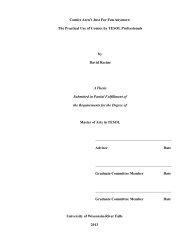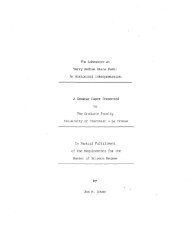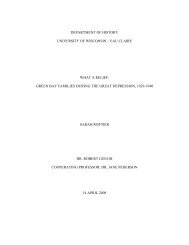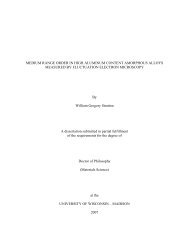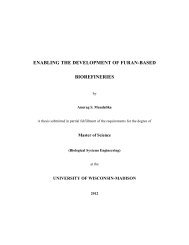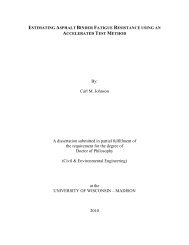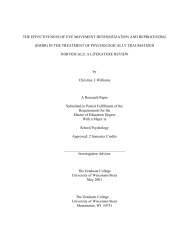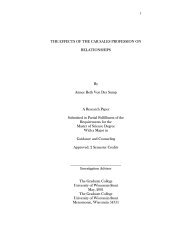RELIGION AND SPANISH COLONIALISM IN THE PHILIPPINES by ...
RELIGION AND SPANISH COLONIALISM IN THE PHILIPPINES by ...
RELIGION AND SPANISH COLONIALISM IN THE PHILIPPINES by ...
Create successful ePaper yourself
Turn your PDF publications into a flip-book with our unique Google optimized e-Paper software.
There are similarities between Spanish Catholic symbology and Philippine symbology<br />
that potentially made conversion to Catholicism easier for the Filipinos who chose to do so. Fish<br />
are considered symbols of the underworld <strong>by</strong> the Filipino people, alternatively so are lizards,<br />
snakes, and crocodiles (Dakudao 1992:137). In Catholic mythology, snakes are associated with<br />
the Devil and Hell while fish are associated with Jesus of Nazareth who rose from the dead. In<br />
both Philippine and Catholic symbology, birds are associated with heaven (Barreto-Tesoro<br />
2008:82). Both the Spanish and the Filipinos believed that the soul was immortal (Dakudao<br />
1992:139) and a proper burial would ensure the soul‟s passage to heaven. In this way, converted<br />
“Filipinos found their new religion compatible with their old one” (Dakudao 1992:139), which<br />
may have eased some of the anxiety of adopting a new religion.<br />
One aspect of Catholicism that has helped it to survive to the present in the Philippines<br />
and elsewhere is its flexibility. Successful Catholic missionaries were able to identify with and<br />
eventually incorporate indigenous beliefs, traditions, and customs into Catholic beliefs and<br />
practices (Dakudao 1992:147). The placement of Catholic churches may have been influenced<br />
<strong>by</strong> previously existing burial sites. Beneath the Santo Niño Church in Cebu, archaeological<br />
excavations conducted <strong>by</strong> Nishimura uncovered two prehistoric burials (Nishimura 1988:143).<br />
The Spanish missionaries may have constructed the church over these burials to preserve the<br />
burial practices of the local people whom they wished to convert.<br />
Spain considered its colonization of the Philippines as a success; it was to be seen as an<br />
example of Catholicism in Asia. Many indigenous Filipinos did eventually adopt Catholicism as<br />
a result of Spanish colonialism, at least on the surface. Large trade cities, such as Manila and<br />
Cebu, were heavily influenced <strong>by</strong> Spanish colonialism. This can be seen through Spanish-style<br />
architecture and the use of churches and formal cemeteries as burial grounds. The sacred spaces<br />
26



